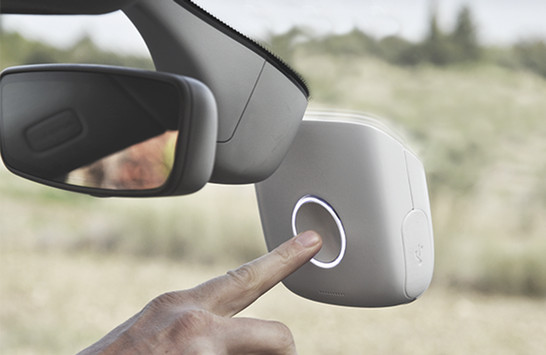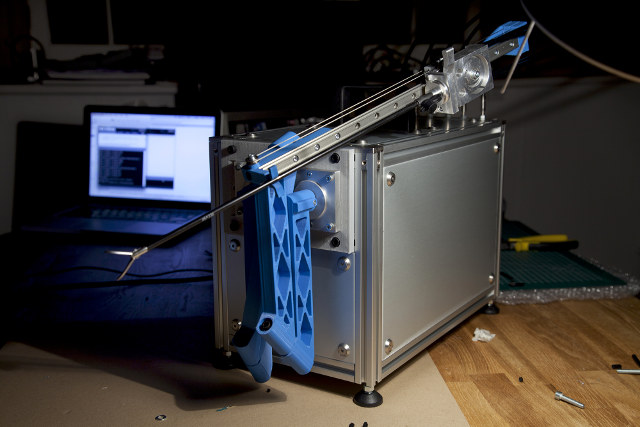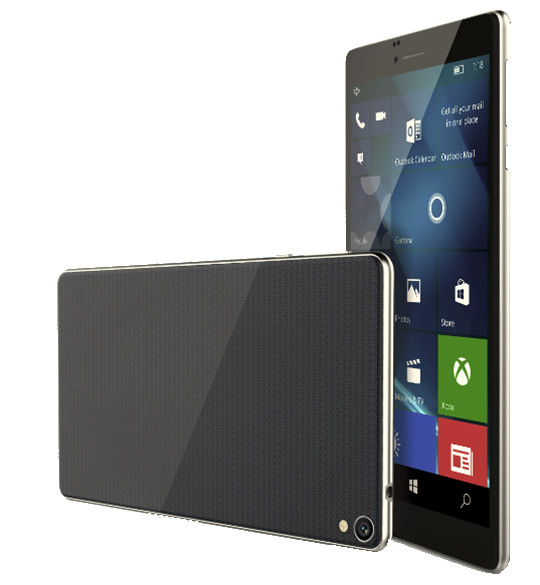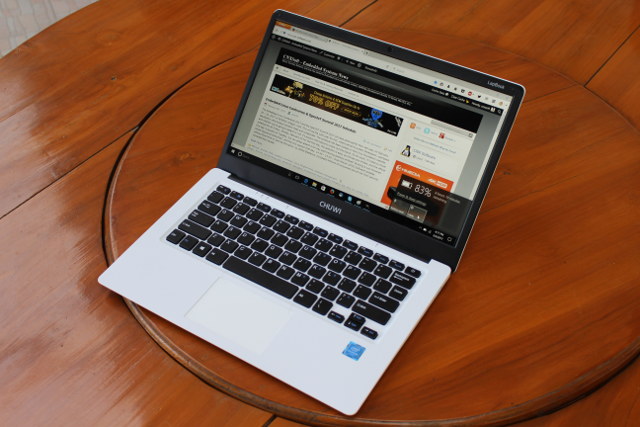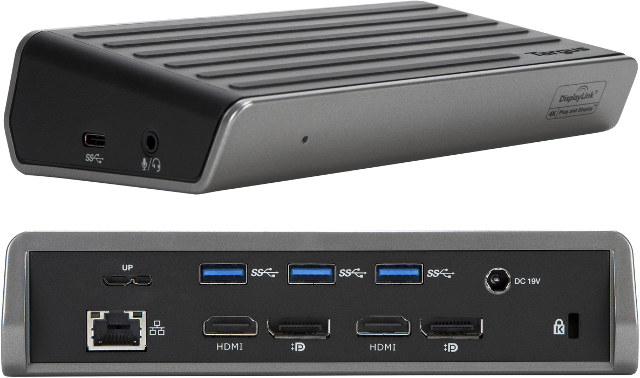SD cards used to store media data only, for example photos and videos in your camera or smartphone, but with the introduction of “Adoptable Storage” in Android 6.0 you can now run apps directly on a micro SD card, and many development boards rely on (micro) SD card to run the full operating system. The difference is important, as with media storage, the raw sequential read and write speeds are the most important, as large files are created and accessed, but for apps and operating systems many small read and write operations such as databases access take place on the card, so random IO performance becomes much more important. So far, the SD card specifications would only report sequential performance with different classes, and for example for are often recommended to use “Class 10” SD cards on Raspberry Pi, which does not clearly indicates the random IO performance. SD Specifications […]
Dride is a Voice Controlled Dashcam Driving Assistant Powered by a Raspberry Pi Board (Crowdfunding)
Next Thing introduced Dashbot Car Dashboard Assistant based on CHIP Pro module late last year, and it will get some competition with Dride, a driving assistant powered by Raspberry Pi, that can also be voice controlled like Dashbot, but includes a Pi camera to record videos, and alert the users of dangers using computer vision, for example when they drive too close to the car in front. The system leverages Raspberry Pi board and Pi Camera, and adds an outer shell, Dride’s Raspberry Pi HAT, and a car charger & cable. Some of the key features listed for the Dride include: Cloud support – Upload and store driving videos to your Dride profile ADAS – Safety alerts in case of lane deviation or frontal collision Voice – Voice commands for navigation & messaging Connectivity – Bluetooth, WiFi, and GPS The developers also provide “Dride – Passenger Seat Driver” app for […]
Open Surgery Initiative Aims to Build DIY Surgical Robots
Medical equipments can be really expensive because of the R&D involved and resulting patents, low manufacturing volume, government regulations, and so on. Developed countries can normally afford those higher costs, but for many it may just be prohibitively expensive. The Open Surgery initiative aims to mitigate the costs by “investigating whether building DIY surgical robots, outside the scope of healthcare regulations, could plausibly provide an accessible alternative to the costly professional healthcare services worldwide”. The project is composed of member from the medical, software, hardware, and 3D printing communities, is not intended for (commercial) application, and currently serves only academic purposes. Commercial surgical robots can cost up to $2,000,000, but brings benefits like smaller incisions, reduced risks of complications and readmissions, and shorter hospital stays thanks to a faster recovery process. There have already been several attempts within the robotics community to come up with cheaper and more portable surgical […]
Emdoor EM-QL8170 is One of the First LTE Tablets Designed Thanks to Allwinner & Qualcomm Partnership
Allwinner and Qualcomm announced a partnership last year to help Chinese manufacturers design entry-level LTE tablets based on Qualcomm Snapdragon processors, and Allwinner collaborated with Emdoor one several designs including EM-QL8170 LTE tablet with a Snapdragon 210 processor and a 6.98″ display. Emdoor EM-QL8170 specifications: SoC – Qualcomm Snapdragon 210 (MSM8909) quad core Cortex A7 processor up to 1.3 GHz with Adreno 304 GPU @ 400 MHz System Memory – 1 or 2 GB DDR3L Storage – 8 or 16 GB flash + micro SD slot Display – 6.98″ IPS touchscreen display with 1280×720 resolution Connectivity – 802.11 b/g/n WiFi, Bluetooth 4.1 LE, and GPS Cellular Connectivity – LTE Cat 4 with 2x micro SIM card slots Camera – 2.0MP front-facing camera, 8.0MP rear camera Audio – 1x microphone, 1x 3.5mm audio jack, likely some speaker somewhere… USB – 1x micro USB port Battery – 2850 mAh battery Dimensions – 189.7 […]
$99 Ping is a Tiny GPS Tracker that Works with Bluetooth and Cellular Connectivity (Crowdfunding)
Ping GPS Tracker is really small, last several months on a charge, and works with GPS, Bluetooth, and Cellular (GSM/EDGE or HSPA/UMTS) connectivity. It helps you track kids, pets, bags, keys, bicycles, cars or anything that may be lost or stolen using your iOS or Android smartphone. Ping GPS tracker specifications: Connectivity HSPA/GSM module + embedded 3G module Bluetooth Low Energy module GPS + GLONASS module Sensor – 3-axis accelerometer Misc – Inset tactile button for check-in & SOS, LED activity indicator Battery – 300 mAh custom lithium ion battery good for about 3 months Dimensions – 34 x 34 x 12 mm (PMMA silicone & elastomer materials) Weight – About 30 grams Waterproof – Up to 10 meters You’d use GPS + cellular connectivity when you are far from the tracked asset, and Bluetooth to locate it when it’s close. A button allows for your kid to send a […]
CHUWI LapBook 14.1 Apollo Lake Laptop Review – Part 2: Windows 10 Benchmarks, User Experience, and Battery Life
CHUWI LapBook 14.1 is the one of the first Apollo Lake laptop on the market. It features a 14.1″ IPS display, a Celeron N3450 quad core processor, 4GB RAM and 64 GB storage. The company has sent me a sample for review, and I had already check out the hardware in “CHUWI LapBook 14.1 Apollo Lake Laptop Review – Part 1: Unboxing & (Partial) Teardown“, so since then I’ve played with it including checking emails & news, writing a blog post on CNX Software, and watching some YouTube videos, as well as running benchmarks and estimating battery life, so I’ll report about my experience with the laptop in the second part of the review. CHUWI LapBook 14.1 System Information LapBook 14.1 runs an activated version of Windows 10 Home 64-bit on an Intel Celeron 3450 “Apollo Lake” quad core processor @ 1.1 GHz / 2.2 GHz with 4 GB RAM […]
Targus Universal DisplayLink Docking Stations Support Up to Six 4K Monitors via a Single USB Cable
USB type C connectors are becoming more and more common and beside transmitting data and power, some devices also support video over USB which requires a dock, and if you have some serious display requirements, Targus docking stations over USB-C or USB 3.0 might be what you are looking for, as they support two 4K monitors at the same time thanks to their multiple HDMI 2.0, DisplayPort 1.2a and DVI outputs, and you can even daisy-chain three docking stations over USB 3.0 type A cables in order to control six 4K monitors from one USB port. Targus has several models, but let’s check out the specifications of their “USB 3.0 DV4K DOCK160USZ dock station” pictured above: Chipset – DisplayLink DL-6950 Video Output Ports – 2x HDMI 2.0 ports, 2x DisplayPort 1.2a ports supporting up to dual 4K Ultra HD video @ 4096×2160 60Hz 24 bpp Audio – 1x 3.5 mm […]
How to Use IPVanish VPN Service on an Android TV Box to Stream Videos from Anywhere
A few days ago, I completed the review of EBox T8 V Android TV box geared towards the UK market and/or people who want to watch UK content. However this time I did not spent that much time on the IPTV / streaming apps, as I had already checked out in EBox T8 4 TV box review last year, and many apps and/or TV programs required an IP address in the UK to work. For example, BBC iPlayer would throw the following error message each time I tried to play a video. Normally, you can work around this using a DNS or VPN service, but it’s not something I really need so I did not investigate further. However, IPVanish contacted me a few days after EBox T8 V review, and I asked whether I could get a test account for their VPN service to try it in EBox T8 V, […]



